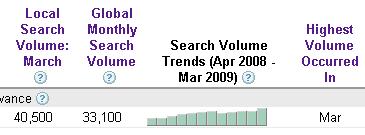You probably experienced reading documentation, technical papers, or even display of monitoring equipment with reactive power values (for power factor correction…) given in KVAR, kVAr, or kvar.
And you probably asked the question: which symbol should be used?
Generally, people remember that the symbol for volts is “V”, with respect to Mr. Volta, and the symbol for amperes is “A”, with respect to Mr. Ampere.
It is then logical to have the apparent power S, which is the product of voltage by current, symbolized by “VA” (voltampere).
For active power P, it was decided to use the same unit (watt) and symbol as the mechanical power, i.e.: “W”, with respect to Mr. Watt.
For reactive power Q, it was decided to introduce the letter “r”. Even if the unit of reactive energy is similar to VA, the standardized symbol is “var” (with small letters).
On the other hand, the symbol for kilo (103) is k, and the symbol for mega (106) is M.
Then, the multiple of “var” are kvar (kilovar) and Mvar (megavar).
For reactive energy, the symbols are varh (var hour), kvarh or Mvarh.
This is the result of international standardization, as you can check in IEC 60027-1 , but also in other documents such as IEEE 519 (“Recommended practices and requirements for harmonic control in Electrical Power Systems”).
By the way, do you know that this value is searched more and more on the web ?
Jacques Schonek


very interesting and I learned more.
This is a very important and valuable information for me. I always wrote kVAr. I stand corrected.
its helping for ug’s
it is interesting and easy to understand. could you do more to find such illustrations in other electrical parameters.
Yours is a very explanation easy to understand, probably you could use some figures such 40 kw, 30 kvar and 50 kva, this may be useful for others to figure out the sine phi, Tangent phi and cosine phi.
The them to create their own perfect triangle
Dear Sir,
I’m facing some problem about PF,I install a APFC panel to maintaing PF but PF is not maintaining becoz i connect one CT on R phase for sensing of PF control relay on T/F outgoing (LT Side) & now i connect a load manager to check PF of plant & 3 No. CT put on R,Y & B.But CT of R phase i was put on between CT of APFC Relay & T/F .So in this sititution PF was not maintain ? Can you suggest this connection was right or not?if not plz tell us the right way of connection. connection i was done from this way..
(PF=.85)HT Meter———-Source(T/F)—-Meter CT——–APFC CT——LOAD
| |
LT METER (PF=1.0) _____| |_____________APFC Relay(PF=1.0)
Distance between APFC Panel & PF relay CT is 70 meter.
I just purchased an energy saving device off Ebay. I had heard of the KVAR brand units but when I surfed the web and called the company, I couldn’t get specs for the product. I ordered a unit out of Honk Kong with good specs if you can believe what is stated on Ebay. The unit looks as good as any but on careful inspection after receipt, I noted it didn’t say where it was made. I decided to open the box to see how the electronics were configured and I was surprised by the simplicity of the device. It was clear to me that I would see a two capacitor device but I expected a circuit board with overload… What I found appears to be two capacitors hooked to a monitor light for the front of the box attached by a variety of wires and nothing else. I have pictures for your review if they will help. Here is what is advertised for specs that I have doubt the box will do but I don’t want to confront the seller or Ebay without a second and third reliable opinion.
Advertised specs that I don’t see how are possible ( full list can be posted upon request ):
1. double insulated
2. Surge Suppression – 6500 Joules
3. Let Through Voltage – 150V Line-To-Neutral
4. Spike Protector: Utility Spike And Electrical / Lightning Storms
5. Transient Noise Reduction: MOV (Metal Oxide Varistor)
6. … Thermal & Overload Protection
here is just a start of my concern: it says double insulated. There are three wires for the 220/240 VAC installation ( two red and one green wire ). As you would expect, one red wire goes to each 120vac leg of your electric panel and the green goes to the ground bus. Well in the box, the green wire comes into the box and goes to a bolt that hold a flat crush clap over the two caps. So, when you look at #3 above to read 150V line to neutral, one would think that if the transient voltage stays too long over 150VAc on one of the legs, that energy will be diverted to the ground wire to protect what you have plugged in within your home. But as you can see, with the way it is designed, if that ground wire does not make a good contact with the home’s ground bus then the exterior of the box could be hot. But I don’t see how #3 is possible anyway with no circuit board to clap the voltage to the 150vac to start. So, how could this unit be double insulated? I need an elect engineers opinion so I know if I am looking at this list correctly. With no circuit board or other discrete component- where is the MOV of # 5 or how is #6 possible?
On this kVAR topic, my problem fits in : I have an LED T8 tube, 1.2m, on 240VAC it draws about 80mA and it has 18W. I do have compared it with a 1.2m fluorescent T8 tube, 36W plus ballast which has on 240 VAC 400mA. The current I have measured with an AC multimeter. Means the LED light saves 5 times the power. If I compare the 18W to 36W plus ballast (around 8W). I have measured this with a Watt-meter. I measured the PF with a meter, for the fluorescent its 0.46, for the LED its 1. So my question is : On the electric bill, do i save half the money or do I save about 5 times the money ? Thanks for lighten me up.
you will save half of the money u give for fluorescent tube because we pay for the real power we utilize!!!!!!!!!!!!!!
Wow! It is so interesting and very easy to understand. This information is very important and good for me.
Can somebody give a chart to select/size capacitor required for a)PFC of individual induction motor
b)shunt capacitor type motor starter?. Why this information including no-load current are not stamped in motor nameplates?.
Thank u very much. its a very interesting.
Is it true that if the load has a reactive component (voltage and current not in phase), only the components of the voltage and current waves that are in phase are used to make this measurement?
Electricians Greenwood Indiana
This blog was… how do you say it? Relevant!! Finally I have found something
that helped me. Thanks!
Good information. Lucky me I found your blog by chance (stumbleupon).
I have book marked it for later!